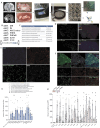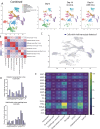This is a preprint.
Common AAV gene therapy vectors show indiscriminate transduction of living human brain cell types
- PMID: 39605617
- PMCID: PMC11601464
- DOI: 10.1101/2024.11.14.623624
Common AAV gene therapy vectors show indiscriminate transduction of living human brain cell types
Update in
-
Common AAV gene therapy vectors show nonselective transduction of ex vivo human brain tissue.Mol Ther Methods Clin Dev. 2025 May 21;33(2):101494. doi: 10.1016/j.omtm.2025.101494. eCollection 2025 Jun 12. Mol Ther Methods Clin Dev. 2025. PMID: 40525125 Free PMC article.
Abstract
The development of cell-type-specific gene therapy vectors for treating neurological diseases holds great promise, but has relied on animal models with limited translational utility. We have adapted an ex vivo organotypic model to evaluate adeno-associated virus (AAV) transduction properties in living slices of human brain tissue. Using fluorescent reporter expression and single-nucleus RNA sequencing, we found that common AAV vectors show broad transduction of normal cell types, with protein expression most apparent in astrocytes; this work introduces a pipeline for identifying and optimizing AAV gene therapy vectors in human brain samples.
Figures


References
Publication types
Grants and funding
LinkOut - more resources
Full Text Sources
